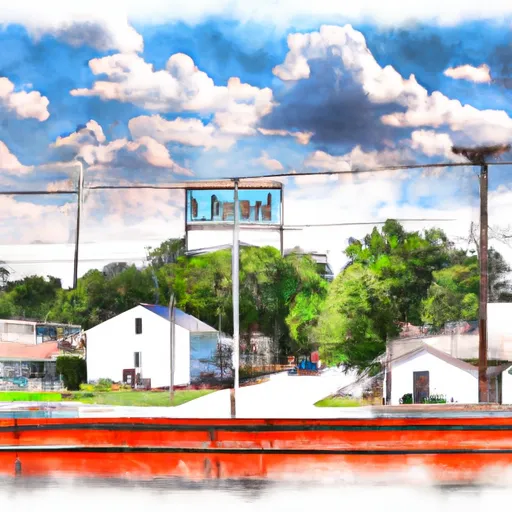-
 Snoflo Premium
Snoflo Premium
Get unlimited access to all our content
With no Ad interruptions! - Start Your Free Trial Login with existing account
Shiloh
Eden Index
Climate
8.3
•
Recreation
3.4
•
Community
3.5
•
Safeguard
5.4/10

Shiloh, Illinois is a charming village located in St. Clair County, in the southwestern part of the state. The climate in Shiloh is characterized by hot summers and cold winters, with an average annual temperature of around 56°F (13°C). Summers are typically humid, while winters can be quite snowy.
Hydrology in Shiloh is primarily influenced by the surrounding streams and rivers, including Silver Creek and the East Fork of the Silver Creek. These water bodies play a crucial role in maintaining the local ecosystem and supporting various aquatic species.
Outdoor enthusiasts will find several recreational opportunities in Shiloh. The Village of Shiloh operates several parks and trails, including Three Springs Park and Shiloh Community Park, which offer amenities such as playgrounds, sports fields, and picnic areas. Additionally, the nearby Scott Air Force Base provides access to fitness centers, golf courses, and fishing ponds, offering even more options for outdoor activities.
Overall, Shiloh, Illinois is a delightful community that experiences distinct seasons, offers beautiful natural surroundings, and provides ample opportunities for outdoor recreation.
What is the Eden Index?
The Snoflo Eden Index serves as a comprehensive rating system for regions, evaluating their desirability through a holistic assessment of climate health, outdoor recreation opportunities, and natural disaster risk, acknowledging the profound impact of these factors on livability and well-being.
Climate Health Indicator (CHI): 8.3
Shiloh receives approximately
1046mm of rain per year,
with humidity levels near 84%
and air temperatures averaging around
14°C.
Shiloh has a plant hardyness factor of
6, meaning
plants and agriculture in this region thrive during a short period during spring and early summer. Most
plants will die off during the colder winter months.
By considering the ideal temperature range, reliable water supplies, clean air, and stable seasonal rain or snowpacks, the Climate Health Indicator (CHI) underscores the significance of a healthy climate as the foundation for quality living.
A healthy climate is paramount for ensuring a high quality of life and livability in a region, fostering both physical well-being and environmental harmony. This can be characterized by ideal temperatures, reliable access to water supplies, clean air, and consistent seasonal rain or snowpacks.
Weather Forecast
Streamflow Conditions
Kaskaskia
Area Rivers
Kaskaskia
Snowpack Depths
Kaskaskia
Reservoir Storage Capacity
Kaskaskia
Groundwater Levels
Recreational Opportunity Index (ROI): 3.4
The Recreational Opportunity Index (ROI) recognizes the value of outdoor recreational options, such as parks, hiking trails, camping sites, and fishing spots, while acknowledging that climate plays a pivotal role in ensuring the comfort and consistency of these experiences.
Access to outdoor recreational opportunities, encompassing activities such as parks, hiking, camping, and fishing, is crucial for overall well-being, and the climate plays a pivotal role in enabling and enhancing these experiences, ensuring that individuals can engage in nature-based activities comfortably and consistently.
Camping Areas
| Campground | Campsites | Reservations | Toilets | Showers | Elevation |
|---|---|---|---|---|---|
| Fontainebleau State Park | None | 18 ft | |||
| St. Bernard State Park | None | 3 ft | |||
| Atwood Water Park | None | 218 ft | |||
| Lake Columbia | 12 | 212 ft | |||
| Timberlake - Ross Barnett Reservoir | 289 | 331 ft | |||
| DLo Water Park | None | 312 ft | |||
| Dry Creek Water Park | None | 514 ft | |||
| New Orleans Reserve Military | None | 0 ft | |||
| Walkiah Bluff Water Park | None | 38 ft | |||
| Simpson County Lake | 11 | 427 ft |
Nearby Fishing
Nearby Ski Areas
Catastrophe Safeguard Index (CSI):
The Catastrophe Safeguard Index (CSI) recognizes that natural disaster risk, encompassing floods, fires, hurricanes, and tornadoes, can drastically affect safety and the overall appeal of an area.
The level of natural disaster risk in a region significantly affects safety and the overall livability, with climate change amplifying these risks by potentially increasing the frequency and intensity of events like floods, fires, hurricanes, and tornadoes, thereby posing substantial challenges to community resilience and well-being.
Community Resilience Indicator (CRI): 3.5
The Community Resilience Indicator (CRI) recognizes that education, healthcare, and socioeconomics are crucial to the well-being of a region. The CRI acknowledges the profound impact of these elements on residents' overall quality of life. By evaluating educational resources, healthcare accessibility, and economic inclusivity, the index captures the essential aspects that contribute to a thriving community, fostering resident satisfaction, equity, and social cohesion.

